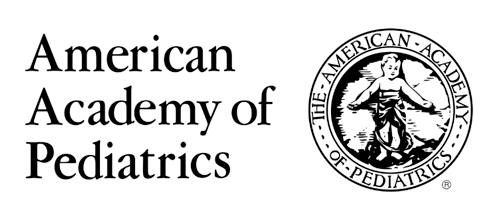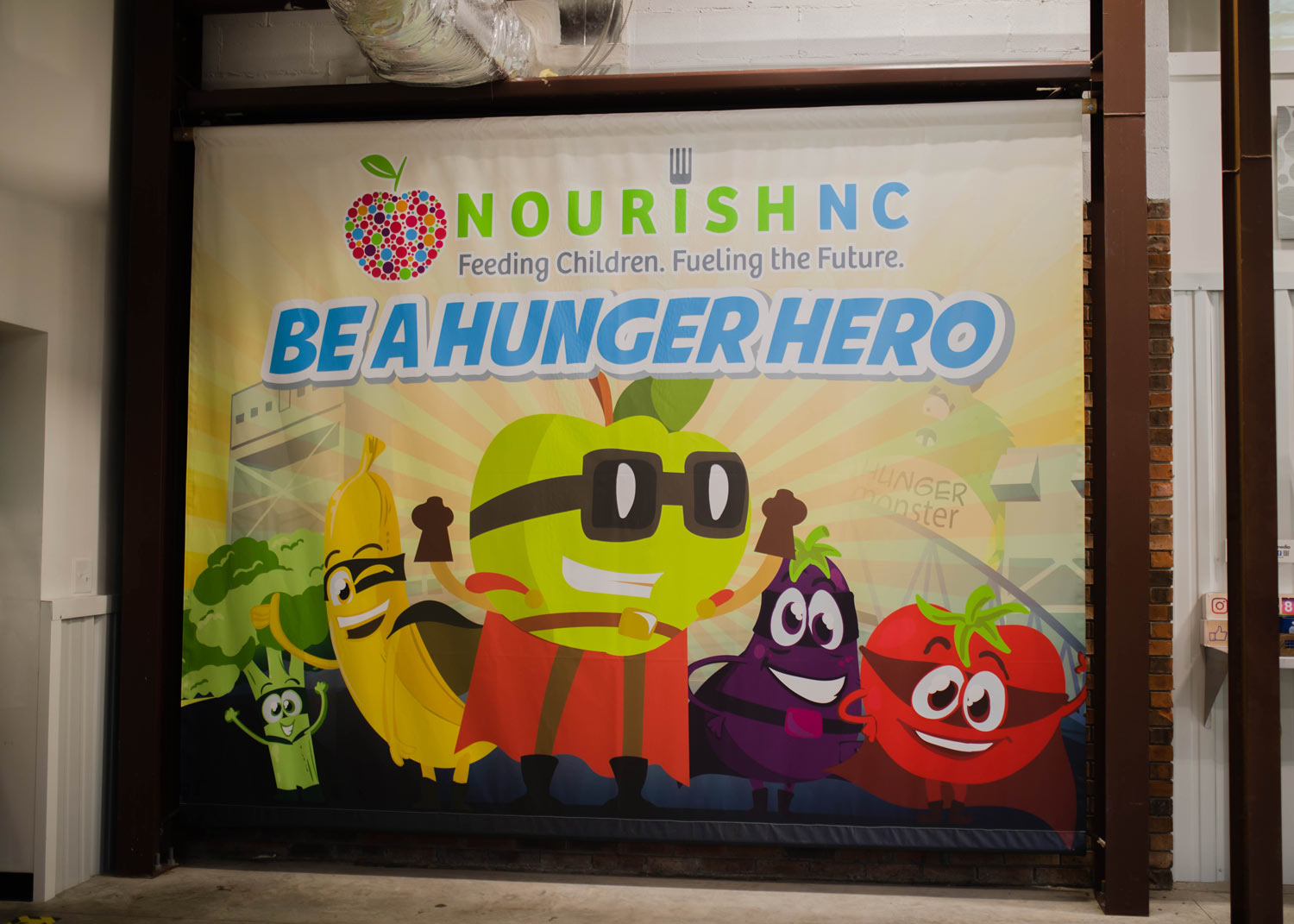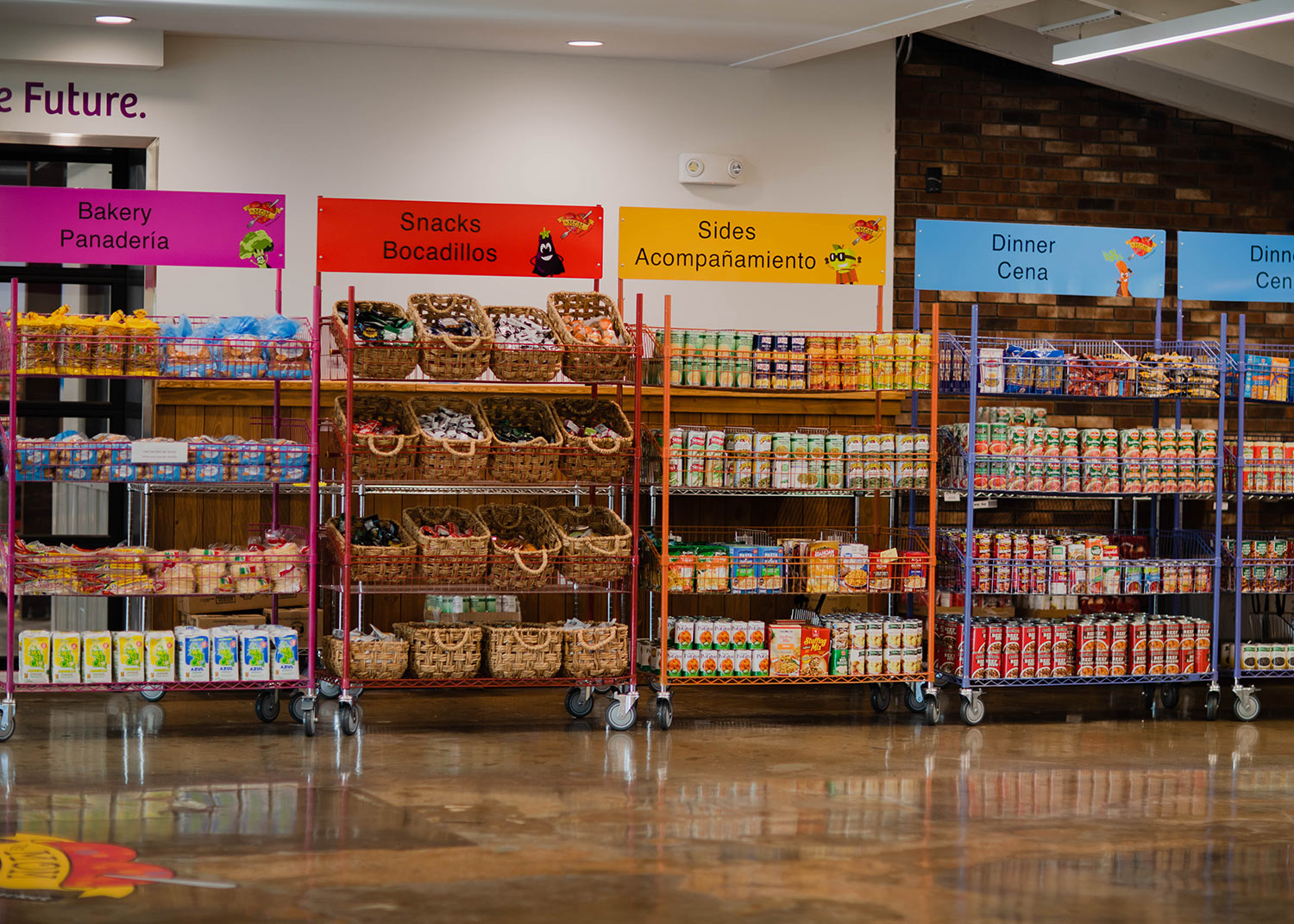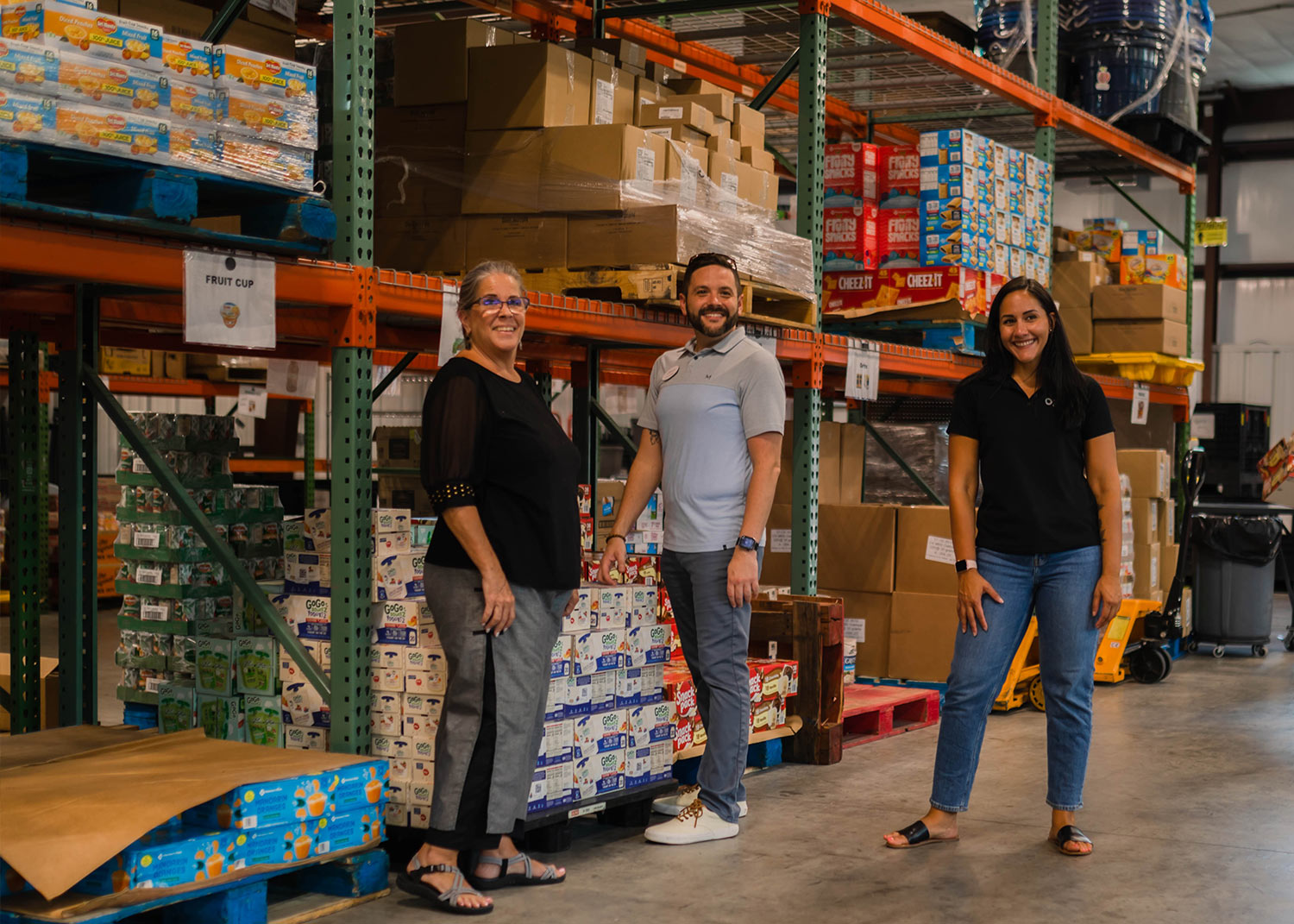HELPING KIDS LIVE HAPPIER & HEALTHIER LIVES
Donate TodayAccording to the American Academy of Pediatrics, food security is critical to the success of a child in and out of the classroom.
“After multiple risk factors are considered, children who live in households that are food insecure, even at the lowest levels, are likely to be sick more often, recover from illness more slowly, and be hospitalized more frequently. Lack of adequate healthy food can impair a child’s ability to concentrate and perform well in school and is linked to higher levels of behavioral and emotional problems from preschool through adolescence. Food insecurity can affect children in any community, not only traditionally underserved ones.”

Children who are raised in food insecure homes:
Are sick more often and slower to recover
More likely to suffer from depression, anxiety and behavioral problems
May have lower math and reading scores
More absences and tardies Higher rates of grade repetition
New Hanover County Hunger Facts
1 in 5
kids struggle with hunger in New Hanover County
(NC Child Data Dashboard)
%
of children live in poor or low-income homes
(2020 data, 2022 NC Data Card/NC Child)
children under 18 are food insecure in New Hanover County
(Feeding America 2021Food Insecurity Projections)
%
of children in New Hanover County are receiving free or reduced lunch
(No Kid Hungry County Profiles, NC Department of Public Instruction)
HELP FEED HUNGRY CHILDREN IN OUR COMMUNITY
Be a Hunger Hero and help fight food insecurity in New Hanover County. Donate, Volunteer, or Host a Food Drive today!

Donate

Volunteer

Host A Food Drive

Stay Informed
NourishNC Research & Data Library
CEP & Title 1 Schools
Understanding the Relationship Between Community Eligibility and Title I Funding, FRAC (2019)
“Community eligibility is an option that allows high-poverty schools to offer breakfast and lunch free of charge to all students. It creates significant administrative savings by eliminating the collection of school meal applications…Title I provides supplemental funding to school districts with high percentages of low-income students to ensure they meet rigorous state achievement standards.”
Food Insecure Children
Promoting Food Security for All Children
“After multiple risk factors are considered, children who live in households that are food insecure, even at the lowest levels, are likely to be sick more often, recover from illness more slowly, and be hospitalized more frequently. Lack of adequate healthy food can impair a child’s ability to concentrate and perform well in school and is linked to higher levels of behavioral and emotional problems from preschool through adolescence. Food insecurity can affect children in any community, not only traditionally underserved ones.”
Food Insecurity and Child Health
“Household food insecurity was related to significantly worse general health, some acute and chronic health problems, and worse health care access, including forgone care and heightened emergency department use, for children. Compared to rates had they not been food insecure, children in food-insecure household had rates of lifetime asthma diagnosis and depressive symptoms that were 19.1% and 27.9% higher, rates of foregone medical care that were 179.8% higher, and rates of emergency department use that were 25.9% higher”
Equity & Food Insecurity
“Food insecurity is fundamentally an issue of health equity – the fair and just opportunity to be as healthy as possible without facing obstacles like poverty and discrimination. Even in normal times, food insecurity disproportionately affects low-income households, Black and Hispanic families, female-headed households and families with children.”
“For over 20 years, food insecurity has been assessed and monitored by the USDA at the federal level. Although levels of food insecurity have declined and risen over this period, one trend that has continued to persist is the gap in the prevalence of food insecurity between people of color and whites.1 An analysis examining trends in food insecurity from 2001 to 2016 found that food insecurity rates for both non-Hispanic black and Hispanic households were at least twice that of non-Hispanic white households”
Federal Anti-Hunger Programs
Supplemental Nutrition Assistance Program (SNAP)
“SNAP provides nutrition benefits to supplement the food budget of needy families so they can purchase healthy food and move towards self-sufficiency.”
Special Supplemental Nutrition Program for Women, Infants, and Children (WIC)
“A program that serves pregnant, postpartum, and breastfeeding women; infants; and children up to the age of 5. This program provides breastfeeding support, a healthy food package, nutrition education and counseling, and referrals to other community resources.”
Food Deserts, Apartheid, & Sovereignty
What are food deserts, and how do they impact health?
“The United States Department of Agriculture (USDA) define a food desert as an area that has either a poverty rate greater than or equal to 20% or a median family income not exceeding 80% of the median family income in urban areas, or 80% of the statewide median family income in nonurban areas.”
Karen Washington: It’s Not a Food Desert, It’s Food Apartheid
“Oftentimes, people use the words “food desert” to describe low-income communities who have limited access to food. In fact, we do have access to food—cheap, subsidized, processed food. The word “desert” also makes us think of an empty, absolutely desolate place. But there is so much life, vibrancy, and potential in these communities. I coined the term “food apartheid” to ask us to look at the root causes of inequity in our food system on the basis of race, class, and geography. Let’s face it: healthy, fresh food is accessible in wealthy neighborhoods while unhealthy food abounds in poor neighborhoods. “Food apartheid” underscores that this is the result of decades of discriminatory planning and policy decisions. It begs the question: What are the social inequities that you see, and what are you doing to address them?”
“Food sovereignty is the right of peoples to healthy and culturally appropriate food produced through ecologically sound and sustainable methods, and their right to define their own food and agriculture systems. It puts the aspirations and needs of those who produce, distribute and consume food at the heart of food systems and policies rather than the demands of markets and corporations.”
This tool:
- Presents a spatial overview of food access indicators for low-income and other census tracts using different measures of supermarket accessibility
- Provides food access data for populations within census tracts; and
- Offers census-tract-level data on food access that can be downloaded for community planning or research purposes.
General Data
Cape Fear Collective Community Data Platform
“Our Community Data Platform (CDP) is a cloud-based AWS MySQL database containing over 1,000 up-to-date and localized metrics from publicly available sources, regional anchor institutions, and our partner organizations through data usage agreements. This platform is a core component of our commitment and mission to democratize data, enabling data-driven goals, shared measurement, and alignment of community resources.”
“NC Child’s county data cards & interactive data dashboard provide local snapshots of child well-being by county. County data cards present the latest data for key indicators in five areas of children’s well-being: A Strong Start, Family Economic Security, Nurturing Homes and Communities, Health and Wellness, and High-Quality Education.”
Hunger & Pediatricians
“Explore FRAC and the American Academy of Pediatrics’ latest toolkit to learn more about how pediatricians can play a critical role in addressing food insecurity.”
